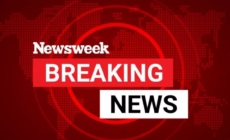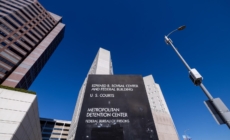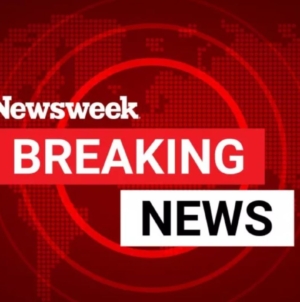-
Plane Crashes into Retirement Village: What to Know - 21 mins ago
-
4.1 earthquake felt across Southern California, centered near Malibu - 30 mins ago
-
Some Democrats Regret Their Scattered Responses to Trump’s Speech to Congress - 41 mins ago
-
How to Watch Big Ten Championships: Live Stream College Wrestling, TV Channel - 56 mins ago
-
Cyclists hit by car while giving out immigration rights cards in Boyle Heights - about 1 hour ago
-
Trump Declines to Rule Out Recession as Tariffs Begin to Bite - about 1 hour ago
-
Video of What Pup Does at Doggy Daycare Has Internet ‘Sobbing’ - 2 hours ago
-
Trans sex worker killed by LAPD after calling 911 to report kidnapping - 2 hours ago
-
Americans Should ‘Absolutely Not’ Prepare for Recession—Trump Official - 2 hours ago
-
Chaos at the V.A.: Inside the DOGE Cuts Disrupting the Veterans Agency - 2 hours ago
Intensifying climate whiplash linked to California fires, study finds
The devastating wildfires that have ravaged Southern California erupted following a stark shift from wet weather to extremely dry weather — a phenomenon scientists describe as hydroclimate whiplash.
New research shows these abrupt wet-to-dry and dry-to-wet swings, which can worsen wildfires, flooding and other hazards, are growing more frequent and intense because of human-caused climate change.
“We’re in a whiplash event now, wet-to-dry, in Southern California,” said Daniel Swain, a UCLA climate scientist who led the research. “The evidence shows that hydroclimate whiplash has already increased due to global warming, and further warming will bring about even larger increases.”
The extreme weather shift over the last two years in Southern California is one of many such dramatic swings that scientists have documented worldwide in recent years.
Unusually wet winters in 2023 and 2024 nourished the growth of brush and grass on hillsides across the region, and then came the extremely warm and rainless weather since spring that has left desiccated vegetation throughout the Los Angeles area.
Since October, much of Southern California has baked in record-dry conditions. This extraordinary whiplash in weather has increased risks of the type of extreme wildfires that exploded in strong winds this week, Swain said.
“This whiplash sequence in California has increased fire risk twofold: first, by greatly increasing the growth of flammable grass and brush in the months leading up to fire season, and then by drying it out to exceptionally high levels,” Swain said.
“Climate change has already brought hotter and drier fire seasons to Southern California that increasingly extend into the winter months,” he said. “This is particularly problematic because strong offshore winds often occur in late autumn and winter in this part of the world. When such strong winds overlap with extremely dry vegetation conditions, as is the case at present, very dangerous wildfire conditions can develop.”
As fossil fuel burning and rising levels of greenhouse gases push temperatures higher, Swain and other scientists project that extreme weather swings will continue to become more frequent and volatile, with precipitation increasingly concentrated in shorter, intense bursts, interspersed with more severe dry spells.
In their study, published Thursday in the journal Nature Reviews Earth & Environment, the researchers examined global weather records and found that hydroclimate whiplash events have already grown 31% to 66% since the mid-1900s, and will likely more than double in a scenario in which the world reaches 3 degrees C, or 5.4 degrees F, of warming.
The researchers said human-caused climate change is driving the increase, and it’s occurring because with each additional degree of warming, the atmosphere is able to absorb and release more water. Swain and his colleagues likened the effect to an expanding “atmospheric sponge” capable of soaking up more water, leading to more intense floods and droughts.
“The problem is that the sponge grows exponentially, like compound interest in a bank,” Swain said. “The rate of expansion increases with each fraction of a degree of warming.”
Swain and eight co-authors said these more intense swings bring greater risks of hazardous wildfires, flash floods, landslides and disease outbreaks.

A vineyard sits under floodwaters in the San Joaquin Valley after a series of historic storms.
(Robert Gauthier / Los Angeles Times)
California naturally experiences some of the world’s most dramatic shifts between very wet weather and dry spells. And with more warming, the scientists project the state to see these swings become even more extreme.
The scientist also cited another recent example of whiplash in California. Immediately after the severe 2020-22 drought, the state was hit by a series of major atmospheric river storms in 2023 that brought heavy rains and historic amounts of snow, leading to flooding and landslides.
Among other examples, the scientists pointed to torrential rains and flooding in East Africa in 2023, which followed a long drought that destroyed crops and displaced people.
“Increasing hydroclimate whiplash may turn out to be one of the more universal global changes on a warming Earth,” Swain said.
Other research has found that climate change has become the dominant driver of worsening droughts in the western U.S., that wildfire weather is occurring more frequently, and that global warming has increased the risk of explosive wildfire growth.
Adapting to these more intense extremes in California and elsewhere, the researchers said, will require changes in water management practices and infrastructure to plan for both droughts and floods rather than treating them as separate hazards. One approach, they said, is to restore natural floodplains to absorb high flows from flashier storms, reducing flood risks while also recharging groundwater.
Because increasing climate volatility is linked to various interrelated hazards, the scientists said there is “an urgent need for disaster management, emergency preparedness, and infrastructure design” to incorporate the intensifying risks of these “cascading impacts.”
The findings also underscore the importance of efforts to limit global warming, Swain said. “The less warming there is, the less of an increase in hydroclimate whiplash we’re going to see.”
Source link




















